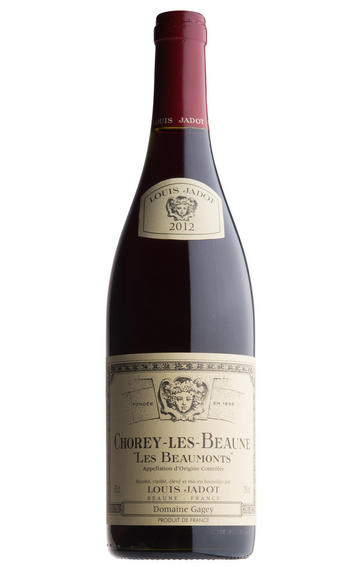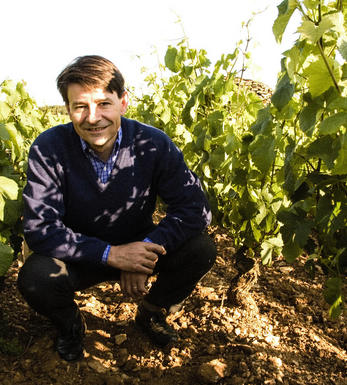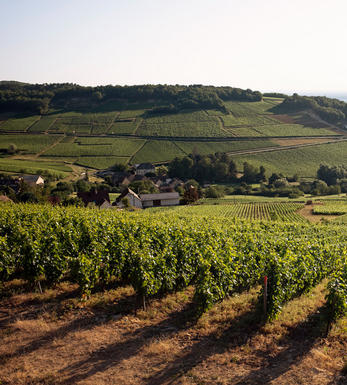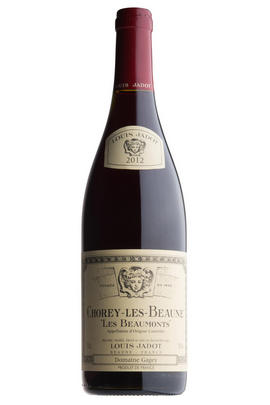
About this WINE

Louis Jadot
Maison Louis Jadot owns over 60 hectares of vineyard, many of them premier and grand cru, and in Jacques Lardière has one of the most respected winemakers working in Burgundy today, from impressive purpose built cellars on the road to Savigny-les-Beaunes.
The house of Louis Jadot was founded in 1859 though the family had previously been vignerons in the region, acquiring their famous Clos des Ursules in 1826. After the death of the last male members of the family, long-time manager André Gagey took over running the business which was subsequently purchased by the Kopf family, owners of Jadot’s US importers Kobrand. The company is today run by Pierre-Henri Gagey, assisted by head winemaker Jacques Lardière who has been responsible for the company’s wines since 1970.
Recent developments have included the establishment of the tonnellerie Cadus in Ladoix-Serrigny and expansion of the modern winery facilities on the Route de Savigny, with a new white-wine vinification centre completed in 2009. On the vineyard front there have been purchases in the Mâconnais (Domaine Ferret) and the Beaujolais, notably with the Château des Jacques in Moulin-à-Vent and the Château de Bellevue in Morgon.
Jacques Lardière is fascinating to talk to and much prefers to talk about the philosophy of his winemaking than specific techniques. Basically, once healthy grapes have been selected, he wants to let the wine run its own course as much as possible. Every intervention he sees as a closing of a door rather than an opening. So there is no formal pre-maceration, no control over the upper limit of temperature during fermentation, no pumping over because that will accelerate the fermentation process while punching down will not. The wine remains in the vat after the fermentation until the chapeau, the crust of skins and pips, starts to slide down of its own accord, at which time the wine has finished digesting the whole fermentation process.
The wine is then raised in barrel, typically with a good third of new oak across the cellar, perhaps up to 50 per cent in a weaker vintage.
With the whites, Lardière often partially blocks the malolactic fermentation in order to retain acidity and finesse, and the reds are fermented at unusually high temperatures and macerated for up to a month, endowing them with depth of fruit and complexity.
Both the reds and whites are of impeccable quality and reflect the individual terroirs of their respective villages and sites, allied with Lardière`s supreme winemaking skills.
The domaine vineyards belong to various entities: Domaine Louis Jadot itself, Les Héritiers de Louis Jadot, Domaine André Gagey and, on farming contracts, Domaine dela Commaraine and Domaine du Duc de Magenta.
Jasper Morris MW, Burgundy Wine Director and author of the award-winning Inside Burgundy comprehensive handbook.

Chorey-Lès-Beaune
Chorey-Lès-Beaune is a wine appellation (AOC) located just a short distance from the town of Beaune, the wine capital of Burgundy. It is part of the larger Côte de Beaune sub-region, known for producing some of the world’s most renowned and sought-after wines.
The primary grape varieties are Pinot Noir and Chardonnay. The reds are typically elegant and medium-bodied and exhibit the characteristic Burgundian flavours of red berries, cherries, and earthy notes. White wines are less common in this appellation but can be fresh, crisp, and mineral-driven.
Chorey-Lès-Beaune shares the same terroir characteristics as its more famous neighbours, such as Pommard and Beaune. The vineyards benefit from limestone-rich soils and a well-suited climate for producing high-quality grapes. The limestone content in the soil contributes to the wines’ minerality and complexity.
In Burgundy, appellations are classified into a hierarchical system based on the perceived quality of the vineyards. Chorey-Lès-Beaune is classified as a Village appellation, one step below Premier Cru and Grand Cru appellations in prestige. However, this does not mean that the wines are of lower quality; they can still be exceptional, and many wine enthusiasts seek out these wines for their value.
Like most Burgundy wines, red Chorey-Lès-Beaune wines pair well with a variety of dishes, including roast poultry, grilled salmon, and dishes featuring mushrooms. The whites, if available, can be enjoyed with seafood, poultry, and creamy sauces.
While Chorey-Lès-Beaune may not have the same level of recognition as some of its prestigious neighbours, it offers wine enthusiasts an opportunity to explore the Burgundian terroir and the classic grape varieties of Pinot Noir and Chardonnay in a slightly more accessible and affordable way.

Pinot Noir
Pinot Noir is probably the most frustrating, and at times infuriating, wine grape in the world. However when it is successful, it can produce some of the most sublime wines known to man. This thin-skinned grape which grows in small, tight bunches performs well on well-drained, deepish limestone based subsoils as are found on Burgundy's Côte d'Or.
Pinot Noir is more susceptible than other varieties to over cropping - concentration and varietal character disappear rapidly if yields are excessive and yields as little as 25hl/ha are the norm for some climats of the Côte d`Or.
Because of the thinness of the skins, Pinot Noir wines are lighter in colour, body and tannins. However the best wines have grip, complexity and an intensity of fruit seldom found in wine from other grapes. Young Pinot Noir can smell almost sweet, redolent with freshly crushed raspberries, cherries and redcurrants. When mature, the best wines develop a sensuous, silky mouth feel with the fruit flavours deepening and gamey "sous-bois" nuances emerging.
The best examples are still found in Burgundy, although Pinot Noir`s key role in Champagne should not be forgotten. It is grown throughout the world with notable success in the Carneros and Russian River Valley districts of California, and the Martinborough and Central Otago regions of New Zealand.



Buying options
Add to wishlist
Description
This is the first Jadot vintage of this wine from a vineyard formerly belonging to the late Benoît Germain. Deep dark purple, with a gorgeous raspberry and blackcurrant nose, very lively. Vivid fresh acidity balances the deliciously juicy mouthful.
Jasper Morris MW, Burgundy Wine Director
Jacques Lardière is now in charge of a new project in Oregon, after 40 years at Louis Jadot, and Frédéric Barnier is fully installed in Beaune in his place. In principal, however, there are not expected to be any changes to the winemaking. Frédéric describes 2012 as a superb vintage for reds with very healthy grapes, despite the difficult growing season. He notes the exceptionally concentrated fruit coupled with good acidity. He just had to take care to avoid over firm tannins. The whites were more difficult but their practice of retaining a proportion of the malic acid has been useful this year. All the whites are now bottled with DIAM corks.
wine at a glance
Delivery and quality guarantee